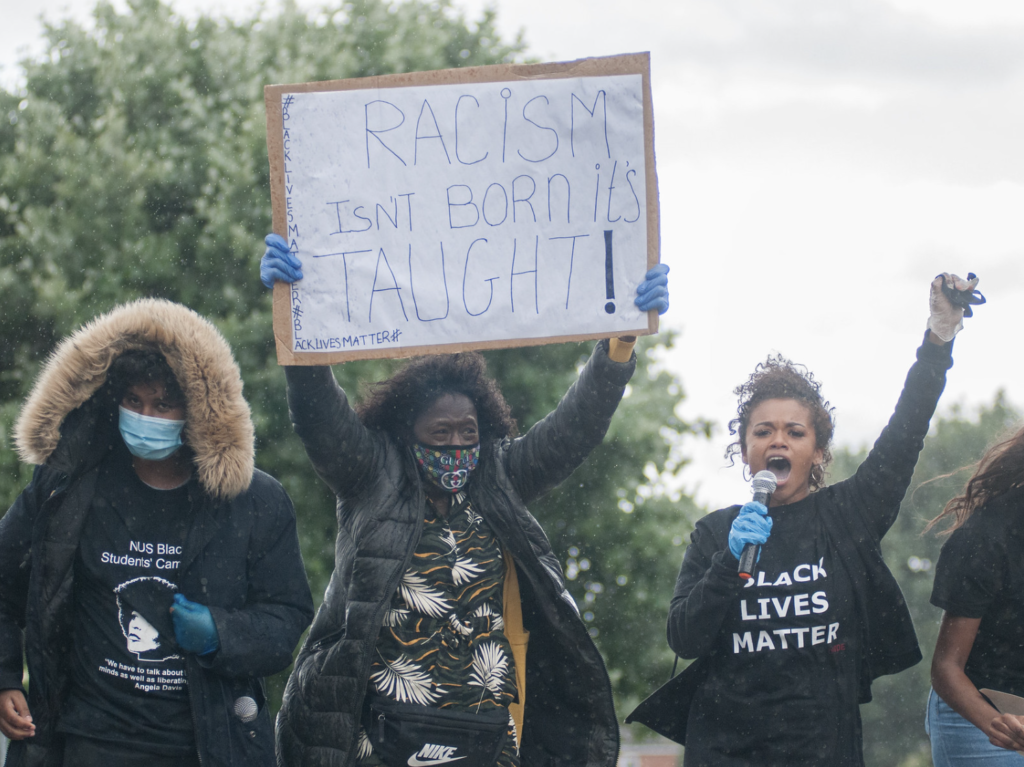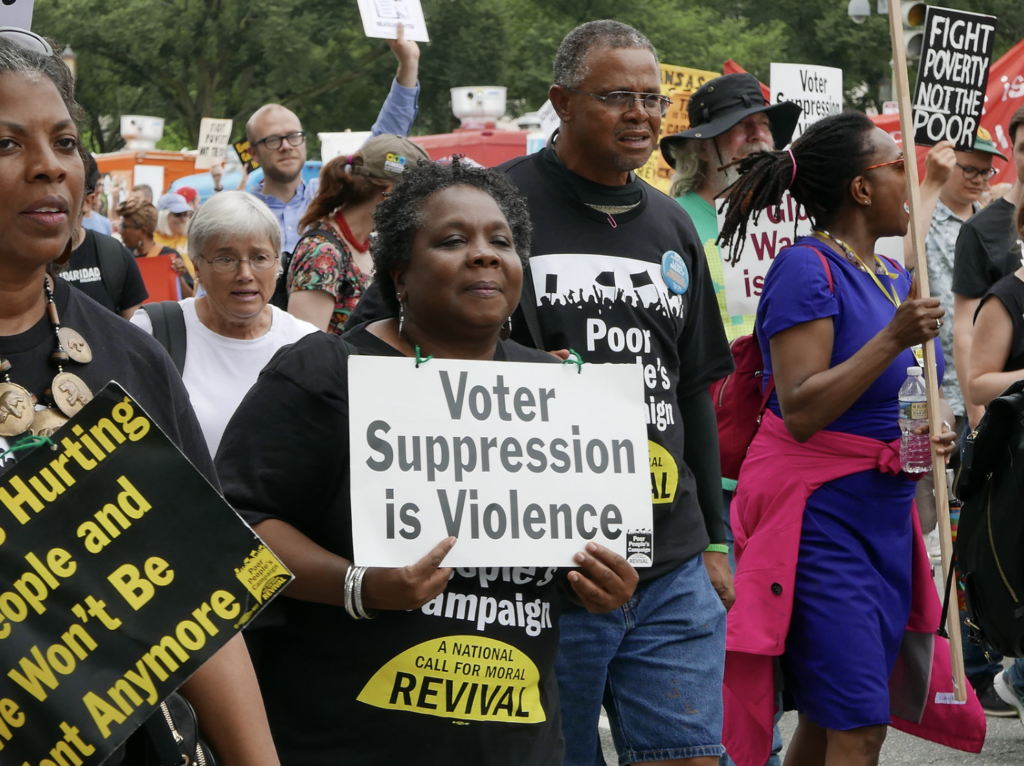Challenges in Achieving the Dream
In principle the American Dream appears accessible to everyone, however, not everyone truly has the same chance of achieving this dream. (Archer 2014; Howell and Caisy 2019) The expansion of wealth inequality within America in part reflects that hard work and dedication are not always the formulas for success (Archer 2014; Bukowczyk 2016), as there are systemic challenges that hamper individuals’ access to various forms of capital. The consequences of poverty, food inequality, differential access to education, and healthcare all work against individuals (Alexander 2020; Bonnette 2015; Howell and Caisey 2019; Messner, Rosenfeld, and Hövermann 2019; Musick and Wilson 1998; Newman 2016; Omi and Winant 2014). These systemic barriers reinforce poverty and further limit opportunities, generating a cycle that makes success and the American Dream impossible.
The image below is from a black lives matter protest and captures the essence of learned behavior. The protestors are calling for attention to the racism that is ingrained in our society and fighting for change. (Black Lives Matter Protest- Sheffield by Time Dennell from Flickr. CC BY-NC 2.0)

The imbedded inequalities and oppression that surround historically marginalized groups limit their opportunities to achieve this dream. For some individuals, the idea of the American Dream becomes skewed, and its feasibility feels far-fetched. Specifically, black people have faced and continue to face disproportionate inequalities that affect their quality of life (Omi and Winant 2014). In a study (Howell and Caisey 2019) focusing on the need for equal educational opportunities for Black students, AP scores were evaluated in comparison to those of white students. Howell and Caisey (2019) found that foundational systemic racism intervenes with the access to higher-ed programs because of residential segregation, charter and choice initiatives, academic tracking, and racially biased discipline and teaching methods (Howell and Caisey 2019). All these barriers were found to work together simultaneously to discourage and disable students of color from achieving higher education in comparison to white students. Unequal access does not stop education; in fact, racism is so deeply ingrained into our institutions all factors of life are affected by an individuals’ racial identity (Howell and Caisey 2019; Musik and Wilson 1998; Omi and Winant 2014). People of color are often deprived of an adequate education because of residential segregation; they are also likely to have simpler, entry level jobs which decrease their access to class mobility as well as economic success (Musick and Wilson 1998). This leads to a cycle of poverty that also affects access to health care and other wellness opportunities (Beech et al. 2021).
The image below highlights the recognition of voter suppression that targets communities of color. The restrictions on voting further restrict class mobility and change. (Poor People’s Campaign DC 2018 by Susan Melkisethian from Flickr. CC BY-NC-ND 2.0)

The cycle stems from a lack of education and acknowledgement surrounding historical oppression and its lingering effects lead to a colorblind ideology (Alexander 2020) promising all Americans economic freedom through dedication. Consequently, disregarding racism leads to the belief that regardless of where individuals start, economic freedom and success are possible which becomes reinforced when white Americans are sheltered from the truth about the lingering effects of racism (Beech et al. 2021). This colorblindness contributes to greater issues of ignorance that further enforces poverty cycles and inequities.
Other challenges remain for minority communities such as voter suppression and public policies that restrict mobility and perpetuate power inequalities (Alexander 2020; Beech et al. 2021; Howell and Caisey 2019). As a result of voter suppression and policies restricting people of color, they are silenced and cannot make changes. These injustices and inequalities are considered a glass ceiling that block people of color from succeeding to the best of their ability (Hanson and White 2011). This barrier counteracts opportunities to succeed in a capitalistic society which values wealth and status. Despite the barrier, individuals continue to fight for access, equal opportunities, and create alternate paths to success.